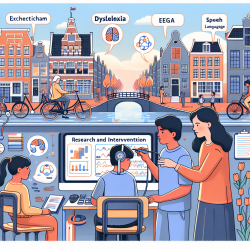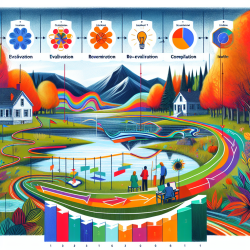Introduction
In the evolving landscape of education, fostering an inclusive and supportive environment for LGBTQ youth is more crucial than ever. The research article "Pride Camp: Pilot study of an intervention to develop resilience and self-esteem among LGBTQ youth" offers insightful outcomes that can significantly enhance the skills of practitioners working with LGBTQ students. This blog explores the key findings of the study and how they can be implemented to improve the well-being of LGBTQ youth in educational settings.
The Power of Pride Camp
Pride Camp is an intervention designed to build resilience and self-esteem among LGBTQ youth by providing an affirming and inclusive environment. Situated on a college campus, the camp offers a unique opportunity for LGBTQ high school students to connect with peers, engage in community activities, and envision themselves as future college students. The research conducted from 2015 to 2017 revealed significant increases in resilience, self-esteem, and quality of life among participants, particularly transgender and gender nonbinary (TGN) youth.
Key Findings and Implications for Practitioners
- Resilience and Self-Esteem: The study demonstrated that Pride Camp significantly boosted the resilience and self-esteem of LGBTQ youth. Practitioners can incorporate similar resilience-building activities and affirming environments in their programs to support LGBTQ students.
- Community and Peer Support: The camp provided a platform for LGBTQ youth to meet peers and engage in supportive communities. Encouraging the formation of Gay-Straight Alliances (GSAs) and other peer support groups within schools can replicate this supportive environment.
- Affirming Environment: The consistent use of correct gender pronouns and the creation of a safe space were pivotal in fostering confidence among TGN youth. Schools should prioritize gender-affirming policies and practices to create a welcoming atmosphere for all students.
Encouraging Further Research
While the results of the Pride Camp pilot study are promising, the authors recommend further research to explore the long-term impacts of such interventions. Practitioners are encouraged to advocate for and participate in larger controlled studies to measure additional health outcomes and promote health equity for LGBTQ youth.
Conclusion
The Pride Camp intervention highlights the transformative power of inclusive and supportive environments in enhancing the resilience and self-esteem of LGBTQ youth. By implementing the outcomes of this research, practitioners can play a pivotal role in creating a more equitable and empowering educational experience for LGBTQ students.
To read the original research paper, please follow this link: Pride Camp: Pilot study of an intervention to develop resilience and self-esteem among LGBTQ youth.










